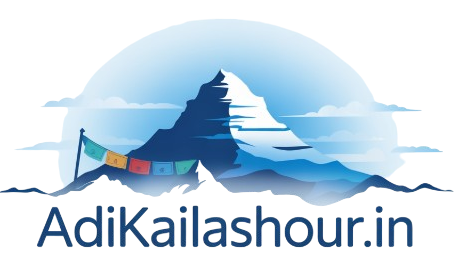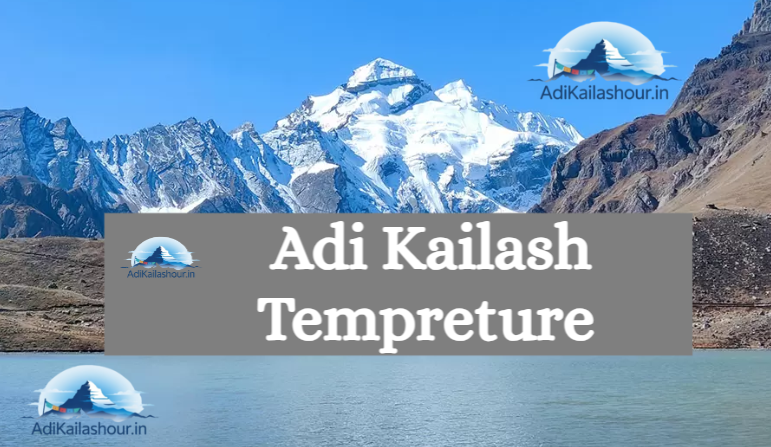The temperature at Adi Kailash, given its high-altitude location in the Kumaon Himalayas, is a critical factor for anyone planning the pilgrimage. The region experiences significant variations throughout the year, with cold temperatures being a constant, even during the peak yatra season. Understanding these climatic conditions is essential for proper packing and ensuring a comfortable and safe journey.
General Temperature Range at Adi Kailash
Adi Kailash (and its surrounding high-altitude areas like Jolingkong and Gunji) generally experiences cold to extremely cold temperatures throughout the year. The air is thin, and the weather can be highly unpredictable, changing rapidly within hours.
- Daytime temperatures during the yatra season can range from a chilly 5°C to 20°C.
- Nighttime temperatures are significantly colder, often dropping below freezing point, ranging from 0°C to -10°C or lower, especially as the season progresses towards autumn and winter.

- Temperature
- Precipitation
- Rain Chance
- Wind
- Humidity
- Pressure
Seasonal Breakdown of Adi Kailash Temperatures
The best time to visit Adi Kailash is typically from May to June (pre-monsoon) and September to early November (post-monsoon). Let’s look at the temperatures during these periods and the extreme conditions outside the yatra season.
1. Pre-Monsoon Season (May to June)
This is one of the most popular periods for the yatra, as temperatures are relatively milder compared to other times of the year.
- May:
- Day: Approximately 10°C to 20°C.
- Night: Can drop to 0°C to 5°C. Snow patches are common on the route, especially in early May.
- June:
- Day: Generally warmer, around 15°C to 20°C.
- Night: Typically 5°C to 10°C. Snow has largely melted from the main trails.
2. Monsoon Season (July to August)
While the monsoon brings lush greenery, it’s generally not recommended for the yatra due to heavy rainfall and increased risks.
- July-August:
- Day: Around 10°C to 18°C.
- Night: Typically 5°C to 10°C.
- Note: Despite seemingly moderate temperatures, high humidity, continuous rain, and the risk of landslides make this period unsuitable. Views are often obscured by clouds and mist.
3. Post-Monsoon Season (September to Early November)
This is another excellent and highly favored period for clear skies and stunning views, though temperatures begin to drop.
- September:
- Day: Pleasant, around 10°C to 15°C.
- Night: Can get chilly, around 0°C to 5°C. Clear skies make for cold nights.
- October:
- Day: Cooler, around 5°C to 10°C.
- Night: Significantly colder, often dropping to -5°C to 0°C. This month offers crisp air and fantastic views.
- Early November:
- Day: Cold, often around 0°C to 5°C.
- Night: Very cold, often -10°C to -5°C. Heavy snowfall can begin by mid-November, leading to route closures.
4. Winter Season (December to April)
The yatra is generally closed during these months due to extreme weather conditions.
- December to April:
- Day: Sub-zero temperatures, often ranging from -15°C to -5°C.
- Night: Extremely cold, plummeting to -25°C to -15°C, or even colder at higher altitudes.
- Note: Heavy snowfall makes roads impassable, and the region is covered in deep snow, making travel impossible and highly dangerous.
Factors Influencing Temperature
- Altitude: As you ascend, the temperature drops significantly. Places like Jolingkong and Parvati Sarovar are colder than Dharchula or Gunji.
- Time of Day: Days are relatively warmer when the sun is out, but as soon as the sun sets, temperatures plummet rapidly.
- Wind Chill: High-altitude winds can make even moderate temperatures feel much colder.
- Precipitation: Rain (in monsoon) or snow (in colder months) can cause a sharp drop in perceived temperature.
Implications for Travelers: What to Pack
Given the cold and unpredictable nature of Adi Kailash’s climate, layered clothing is non-negotiable.
- Base Layers: Moisture-wicking thermal wear to keep you dry.
- Mid-Layers: Fleece jackets, wool sweaters for insulation.
- Outer Layers: A heavy-duty, waterproof and windproof jacket (down or synthetic insulated) and waterproof trekking pants are essential.
- Accessories: Warm woollen cap/beanie that covers the ears, balaclava, scarf, waterproof and insulated gloves, and thick woollen socks.
- Footwear: Sturdy, waterproof, and well-insulated trekking boots with good ankle support.
Always be prepared for sudden changes in weather. Even if a day starts sunny, clouds and cold winds can roll in quickly. Prioritize warmth, dryness, and protection from the elements to ensure a safe and memorable Adi Kailash Yatra.

